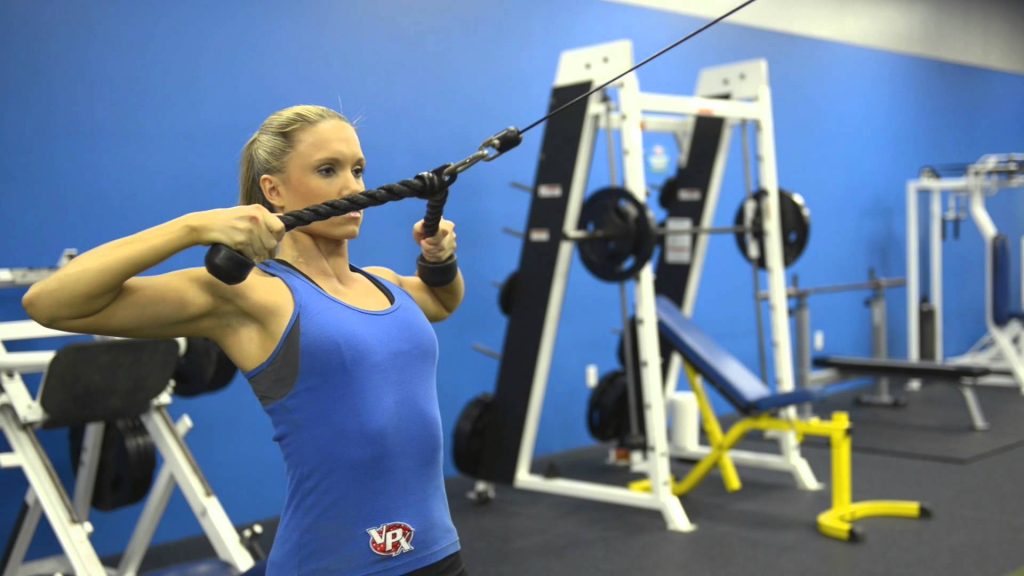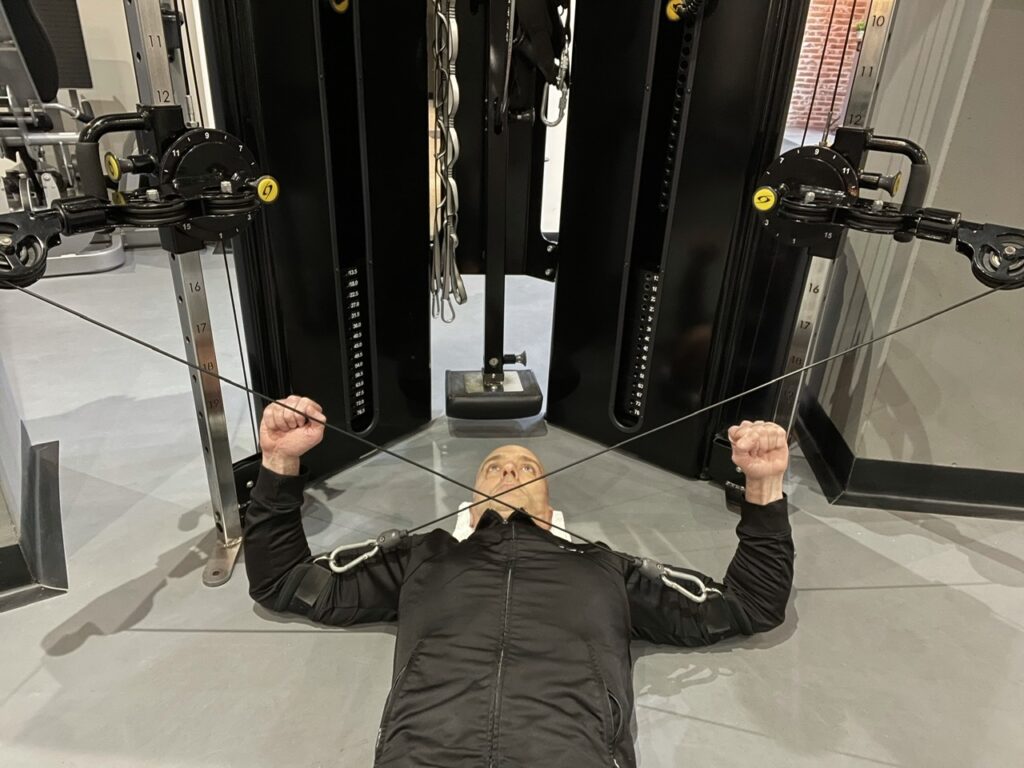In this post we explore why the face pull is bad exercise and give you a safer, more effective alternative.

At a glance
Face pulls are high-risk, low-benefit for those with shoulder issues.
Why face pulls hurt:
- Rope straightening doubles the resistance at end range.
- Moment arm increases as elbows move back, increasing load on the shoulder.
- Target muscles are weakest at end range.
- Many perform it fast, bypassing muscle operating range and increasing injury risk.
Better alternative: Supine reverse cable crossover
- Lying down stabilises the trunk.
- Cable attachment above elbow reduces shoulder load.
- Resistance profile favours muscle engagement throughout the full range.
Introduction
Perhaps the most significant part of my work is not the exercises I give people, but rather the ones I suggest they stop doing.
There are a number of common exercises that represent bad choices because their risk to benefit ratio is skewed in the wrong direction.
Despite seeming relatively innocuous, the face pull is near the top of that list. Especially if you have existing shoulder problems.
Firstly, what does the face pull feel like to you?
Something like this?
Easy, easy, easy and then as the rope approaches your face, damn! Who lit the fire in my shoulders?!
Don’t worry, you’re not alone. And physics can explain why.
You’ll notice that to accommodate the width of your shoulders, you need to straighten the rope as you pull. This doesn’t sound like a big deal but it has a surprising effect.
For every degree you take the rope into a wider triangle, there’s an increase in the force you have to produce to do so.
Not only are you pulling the cable towards you, you’re also working to straighten the rope.
By the time you get that rope to 120 degrees (almost straight), you’ve doubled the amount of resistance you’re working with.
So if you’ve got 20 kgs on the weight stack, you’re dealing with over 40 kgs by the time that rope nears your face.
There are more reasons why the face pull is a bad exercise however
As you separate your elbows, the moment arm to your shoulder is also increasing, which means the resistance is too.
To feel what I mean, try this.
Set a cable at shoulder height. Slowly begin to pull the cable towards you keeping your elbow level with your shoulder (90 degrees abduction).
What do you notice?
The movement gets harder the closer the handle gets to you?
Exactly.
This is because the distance between the line of force (which is represented by the cable) and your shoulder (glenohumeral joint) is increasing as your elbow travels backwards.
Is there anything else? Yep
The increasing moment arm and the additional force required to straighten the rope, both occur at precisely the point the target muscles are getting weaker.
This is because the posterior deltoid, infraspinatus and teres minor are all shortening in this part of the exercise.
Which is why it feels like somebody has put a blowtorch to your shoulders at the end of the range.
It’s also why everybody performs this exercise fast, really fast.
If you’re using a weight that’s anywhere near challenging in the start position, the only way to get it to the finish position is to launch it.
This creates a poor stimulus to the muscles you’re targeting as you bypass a significant part of their operating range.
These big spikes in force also create the perfect conditions for injury.
All in all it’s a poor exercise, especially if you have shoulder issues.
A safer, more effective alternative to the face pull
Presuming your goal is to get stronger and not injured, there are more effective alternatives.
Try this one.
Supine reverse cable crossover
Firstly, by lying down you allow gravity to anchor your trunk. This will enable you to apply more force to the target muscles.
The cable attachments above the elbow reduce the forces at the shoulder joint. This is good news, especially if you’re currently experiencing shoulder problems.
This exercise also provides a more favourable resistance profile and will have those target muscles working harder throughout their range, not just at the end of it.
Start position

Finish position

Set up
• Use cable attachments placed just above your elbow.
• Lay down in the centre of the cable machine with your shoulders in line with its columns.
• Set the cable height so there’s a significant drop off in the resistance as your elbows approach the floor (the cable should get closer to your shoulder in this position).
• Measure how much active range of motion you have in the direction the cable will take your arm. Don’t let it take you further than this during the exercise.
• Focus on taking your elbows as wide as possible as you push down towards the floor.
Summary
Take a look around any gym and you’ll see people performing the same exercises as if there was no alternative.
With a little knowledge of anatomy and an understanding of force, you’ll begin to see what a nonsense some of these exercises are.
Listen to your body, if an exercise feels horrible it probably is.
If you can’t adapt it, drop it altogether.